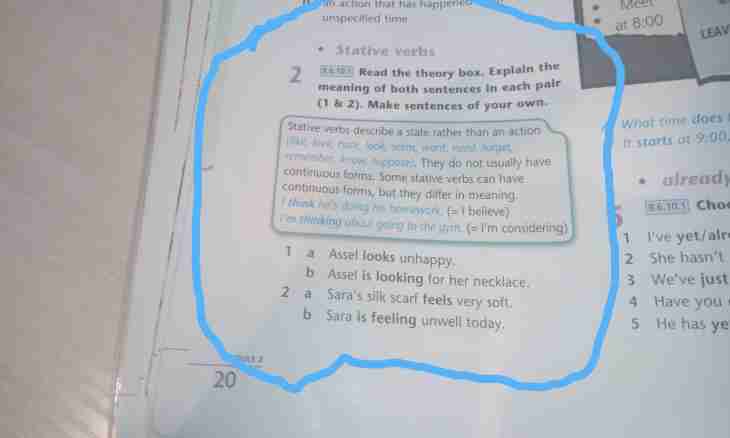In Russian two types of offers – widespread and not widespread meet. The offers consisting of one basis or the principal parts of the sentence – a subject and a predicate belong to the first type (or at least one of them). If, besides a subject and a predicate, in the offer to contain other words supplementing and explaining the meaning of a basis, then such sentence is called extended, and the words specifying and the additional meaning of the offer, will concern his minor members.
Distinguish three types of secondary parts of the sentence: addition, definition and circumstance.
Addition
Addition answers questions of oblique cases and designates an object to which it is directed or with which the action expressed to predicates is connected.
Additions happen - straight lines (are formed by a noun in the form of an accusative case without pretext); the direct object always belongs to a transitive verb; - indirect (all other additions).
In the offer the addition most often happens nouns or pronouns in oblique cases, but can be expressed also by other parts of speech (an adjective, a participle, a verb, a numeral, and even a set phrase) if they act as a noun.
Definition
Definition designates sign, property or quality of a subject and answers the questions "what?", "what?". In the offer the definition can belong both to a subject, and to addition or a circumstance. Allocate 2 types of definitions: - the coordinated definitions which are in the same sort, a case and number, as a word which they define; such definitions can be expressed by an adjective, an ordinal numeral or a participle and also a pronoun as an adjective; - uncoordinated definitions which are connected with the defined word as communication management and are expressed by nouns in any cases, except imenitelny (indirect), adverbs, adjectives or personal pronouns. A special type of definition is the application. This sentence part expressed to nouns contains specification of qualities of the defined word (the social status, age, an occupation and so forth). Such definitions are written through a hyphen with a word which treat. The exception is made by the applications expressed by proper names (topographical names, names of people, names of works, etc.).
Circumstances
The circumstance designates sign of action or other sign and to treat a predicate. Distinguish 8 types of circumstances depending on questions which they answer: 1. scene of action (Where? From where? Where?); 2. image of action (How? How?); 3. time (When? During what period of time? How long?); 4. reason (Why? For what reason?); 5. the purpose (For what? What for? For what purpose?); 6. a condition (Under what condition?); 7. a measure and degree (In what degree (measure)?); 8. a concession (Contrary to what? Despite what?). In the offer of a circumstance are expressed by nouns in oblique cases, adverbs, adverbial participles (verbal adverb phrases), pronouns and verbs in an uncertain form.
